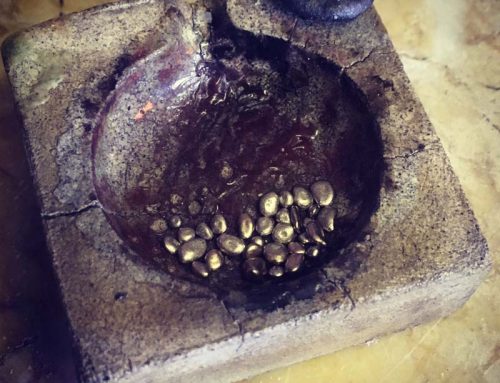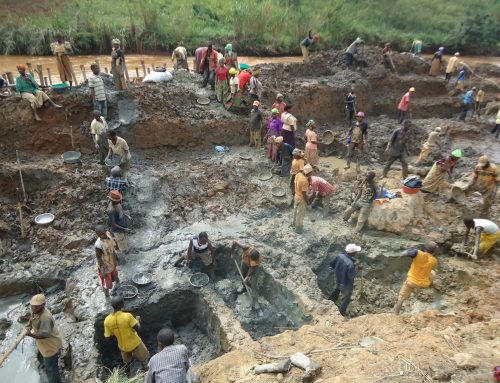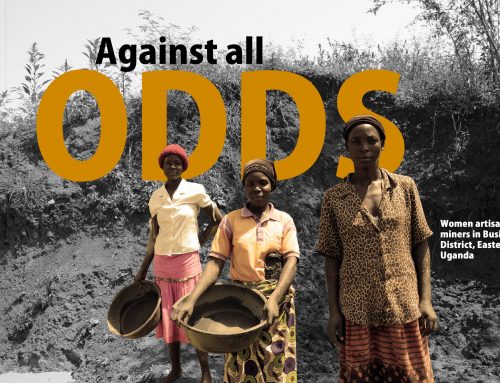As jewellers we don’t want to be caught wearing fur coats with knickers.
Regarding current trends in the gold industry, there is a general move towards traceability in the supply chain. This has been precipitated by the Dodd Frank bill passed in the USA requiring certain raw materials including gold, to be fully declared conflict free through a traceability declaration on the materials origin of denomination. This has created the establishment of the OECD due diligence’s on conflict minerals. Following this, the London Bullion Market Association (LBMA), World Gold Council (WGC), and Responsible Jewellery Council (RJC) have all in recent months issued protocols to their members on how to comply with the OECD due diligence’s for conflict free supply chains.
What is interesting about this is that these protocols all cover the same type of companies. RJC, WGC and LBMA companies are all big corporations and many of them hold membership with more than one of the above bodies such as Metalor, Rio Tinto, Anglo Gold Ashanti for example. All these groups in real terms employ very few people on the ground and the way the OECD has constructed the due diligence framework it has been shaped to protect the financial integrity of the big companies, not the welfare of the communities on the ground. This it would appear is a reflection of the consultation process that was held. Without a corporate CSR budget or supporters money via campaigning NGO’s, being heard by the law makers was virtually impossible. It appears that the OECD principle outcome will be the protecting of the vested interest of corporate companies.
Communities in central Africa bear the real brunt of any violence that may emerge. These communities should be the real beneficiaries of the mineral wealth in their land. Instead due to their poverty they are exploited by big companies, who promise much by way of up front CSR promises and local employment, yet in case after case do not deliver. If they are not being exploited by corporate mining companies then they are subject to militia, violence and the resource curse. The real reputational risk we face as jewellers from conflict material is not being addressed by OECD as those that are vulnerable to exploitation are only going to be unduly penalised by OECD, which will lead to more smuggling and illegal activity than before. People need to eat, regardless of what the UN says. As a Congolese miner friend of mine once said in regards to the Dodd Frank legislation, ‘We can die by the bullet or die by the starvation’.
It would now appear that platinum can be added to the list of controversial metals with the growing violence surrounding the Anglo American owned Lonmin mine in South Africa.
Regarding diamonds, the landscape is as bias to the rich and powerful as in gold, with the added complexity of the existing legal framework called The Kimberley Process. Diamonds are a human rights issue and are deeply political. The current disconnect between the politics, human rights issues and the consumer idea that diamonds are a pure product is perhaps one of the most disingenuous elements in the entire jewellery suppl chain. As I alluded too in an earlier blog post, The Kimberley Process (KPCS) is an inter governmental customs procedure to monitor the flow of rough diamonds from one country to another. It was not set up to be a certification mark on diamonds that could be used with customers. However, it is sold by the industry as a consumer assurance system to bolster confidence in the diamond value chain. The crisis precipitated by the KPCS allowing exports of diamonds from Marange has highlighted the deep faulty lines emerging on the diamond supply chain. Fault lines around its definitions to include human rights in its core considerations when determining if a diamond is a blood diamond. Also the deep levels of mistrust between the countries represented in the KPCS. Western countries want human rights in, China, India, and the African Diamond Producers do not. It would seem that from the following quote from Gillian Milovanovic the current Chair of the KPCS that human rights will not make it into the definitions
Progress on human rights/human security, financial transparency and development related matters should be part of “best practices” and other positive efforts to foster concrete results through mutual assistance amoug KP participants and observers but would not form bases for certification.
(taken from a letter to KPCS dated 7th August 2012)
And worse still she throws the responsibility of the diamond supply onto the retail jeweller.
If consumers want to know more about the diamonds they purchase – for example, whether the diamonds were associated with violence or human rights abuses, or have been used to fund corruption or suppression of democracy – they need to ask tough questions of retailers.
(taken from discussion between KP Chair and Greg Valerio 16 August 2012)
Because there is no traceability in the diamond supply chain, from mine to retail these words should cause the backbone of the industry to shudder. The KPCS is not going to reform and not going to protect us from dodgy stones entering the supply chain. A classic illustration of this is as follows. Stones are mined by embargoed Zimbabwe companies in Marange, they are shipped to China as conflict free, they are cut and polished and set into jewellery, with untraceable precious metals, and then end up on the high street in the UK and USA as precious aspirational products. Moral people uncorrupted by the politics will see this as a joke. Why should jewellers trust the KPCS and the people who govern such a ridiculous system.
In conclusion we await the outcomes of the November plenary meeting of the KPCS to see what will happen in the industry. if as we currently expect it fails to deliver a reform agenda (please be assured if it does I will eat humble pie and offer my genuine congratulations) we may well end up with a two tier KPCS, one for the Chinese and Indians and another with higher standards of due diligence for the western consumer nations.
What is clear though is we need pressure from consumers to move the industry to greater levels of public accountability over blood diamonds.





A diamond is the most untraceable, easiest to smuggle, highest priced rock. – which makes it hard currency that comes from the ground. It’s easiest to mine in some of the most unstable, war-torn countries on earth. It seems a little unrealistic to try and enforce accountability.
Why not instead focus on the root cause; the inflated price put on diamonds in the first place? If a price-fixing case can make it to court in Canada today, it seems clear that despite control being shared by a few large corporations rather than one, the cartel is still in effect. The only solution I see is lab created diamonds driving the price down so low that rebels and dictators won’t be so motivated to kill for them.
Trying to stop consumers from buying blood diamonds is like trying to stop them from accepting cash that was once used by drug dealers.
Here in Sherbrooke Canada, with technical engeneering students, we design and build prototypes of apparels who can help small scale miners, like reverse helix trommel, crusher, centrifuge, inox. retorts all of these prototypes have in common to be easy to be built with local material in poor income country. We need help to promote and involve students in that kind of projects and to bring the know how where it is needed,in Africa, Central and South America, Asia, somebody can help?
Contact me at: prrmasson@gmail.com
Pierre Masson
Teacher